Matador Network's Blog, page 779
September 23, 2020
Tarantula tourism in Colorado

Wildlife tourism is very common, but it rarely includes spider-spotting — except in Colorado. Spider enthusiasts are increasingly traveling to the southern part of the state specifically to watch tarantulas during breeding season.
Visitors are flocking to Comanche National Grassland, Rocky Ford, and La Junta to catch a glimpse of the tarantulas, which are on the move in the fall while looking for a mate. In breeding season, tarantulas are easier to spot as the large males cross roads, walk trails, and even driveways looking for a female.
According Colorado Parks and Wildlife District Wildlife Manager Steve Keefer, they typically don’t survive their first mating season. “They use their fat reserves as they go [looking for a female],” he said, “and there is a lot of risk from predators because they stand out. Fox, coyote, bobcats and birds of prey will get them and the hawk wasp lays its eggs in the body of a tarantula.”
Some cities, like La Junta, actively encourage tarantula tourism to capitalize on the unique fascination. If you’re heading to Colorado to see the tarantulas, the city’s website advises you to choose a warm day without wind, go an hour before sunset, and check out Comanche National Grassland for ideal viewing.
And whatever you do, don’t bother them, touch them, or try to take one home as a souvenir. 
More like thisWildlife11 bugs with powerful stings and hellish diseases to look out for
The post Tourists flock to southern Colorado in the fall to see tarantulas on the move appeared first on Matador Network.

Digital nomad visas around the world

As so many of us transfer from being attached to a fixed office space to being able to work flexibly in our homes, it comes as no surprise that some nations around the world are welcoming remote workers who are looking to relocate from the US. Most of the places we have listed here tick one, if not all, of the following boxes: good weather, an affordable cost of living, a supportive work-life balance, an exciting culture, and an interesting food scene.
Many new digital nomad visa programs have popped up during this summer, but we have also included information about nations in Europe who have long-standing options for freelancers and those who are self-employed. Although travel restrictions are still in place for Europe, many of these visas take a minute to get through the paperwork, so they are still worth considering in the long term.
From tropical Caribbean islands to magical European destinations, here are some of the countries offering the best digital nomad visas from around the world.
1. Aruba

Photo: DiegoMariottini/Shutterstock
The Caribbean island of Aruba announced recently that it’s going to start catering to remote employees from international countries with a new visa scheme. The island is part of the Netherlands, so the fusion of laid-back Caribbean culture and that of the Dutch influences everything from the architecture to the cuisine. It was also one of the first Caribbean islands to open to tourists after COVID-19 travel restrictions, but there are still a few things to consider before embarking on a new start.
The government is offering remote workers a chance to live and work on the island for a maximum of 90 days with its new One Happy Workation visa. Other initiatives — such as discounted rates for accommodation, outdoor experiences and local activities, and the promise WiFi zones — make this option even more appealing.
There are a few stipulations, but in comparison to many other nations, the Aruban government is not asking you to jump through too many hoops or have a bulging bank account. To apply for this visa you must be employed or self-employed in your home country, and during the 90 days, you cannot work for a local company or individual. You must also hold a valid US passport at the date of entry and throughout your stay.
If your application is successful you will also need to respect the COVID-19 regulations in place, comply with the entry testing requirements, and have the necessary health insurance. Read more about the current COVID-19 requirements for entry to Aruba and what to do once you get there.
2. Barbados
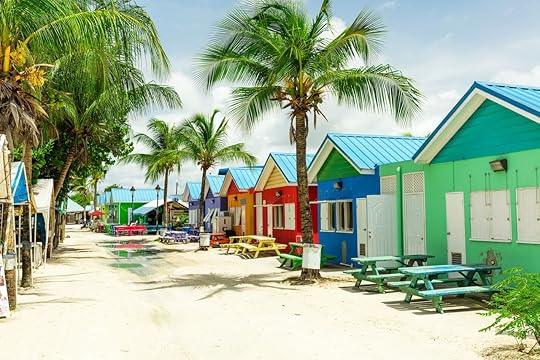
Photo: zstock/Shutterstock
If working from a Caribbean beach surrounded by rich culture and world-class cuisine sounds idyllic, the beautiful island of Barbados has also launched its version of a remote working visa this summer. The new visa, called the Barbados Welcome Stamp, allows people to work remotely in the country for a year. Prime Minister Mia Mottley has spoken highly of the scheme, boasting to The Washington Post, “‘The sunshine is powerful. The seawater is powerful. They’re both therapeutic in ways that are hard to explain. And we felt that, why not share it?”
So what are the basic requirements for the pleasure of working from paradise? To start, you need to pay $2,000 for an individual visa or $3,000 for a “family bundle.” Families are being encouraged to make the most of this new initiative too. All applicants must go through the online process, which is pretty standard; upload a passport picture, copy of passport, and birth certificate; and include a note of any relations you have in the country. It’s also worth noting that successful applicants do not need to contribute to Barbados Income Tax. Like all countries listed here, you will again need to adhere to the local COVID-19 regulations and make sure you have up-to-date information prior to departure.
3. Bermuda

Photo: Just dance/Shutterstock
Bermuda is another island that’s aiming to attract remote workers with its new visa scheme, but the island is taking it a step further by welcoming students to apply. Like many of the Caribbean countries, Bermuda has a large expat community, so it’s a welcoming option if you are relocating alone.
This visa option is valid for up to one year, and there’s not a large number of restrictions in comparison to others. Students need to be over the age of 18 years old and be enrolled in an education program. Remote workers need to provide proof of income and hold a valid contract of employment. If you are successful in your application, the visa grants you multiple entries and exits, so you can come and go as you please. There is also an application fee of $263 and you need valid health insurance. Again, Bermuda has somewhat strict COVID-19 regulations, so make sure you are aware of the current stipulations.
4. Estonia
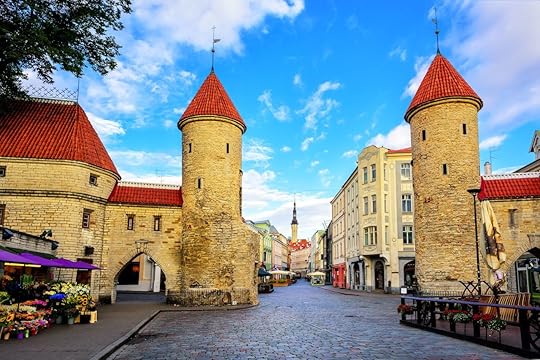
Photo: Elena Stepanova/Shutterstock
If the Caribbean does not fit your lifestyle, you can consider relocating in the future to Europe. The small Baltic country of Estonia voted to amend it’s Alien Act in order to allow remote workers to live and work in the Baltic country for up to one year.
Often overlooked, the nation might be a little out of the way, but it is home to some of the prettiest towns and cities and diverse national parks in the region. The country also has a general overall living cost that’s 30 percent lower than the US, making it a very attractive option during this climate.
In order to apply for Estonia’s extended visa program — the Digital Nomad Visa — you must be able to show that you have a steady income of at least $3,988 a month — which is quite a lot. There is also a $117 processing visa fee and you will need a valid contract of employment and proof of salary. Once you’ve got all that put together and travel restrictions are lifted, you will be required to go to your local Estonian Embassy or Consulate to submit your application.
5. Georgia
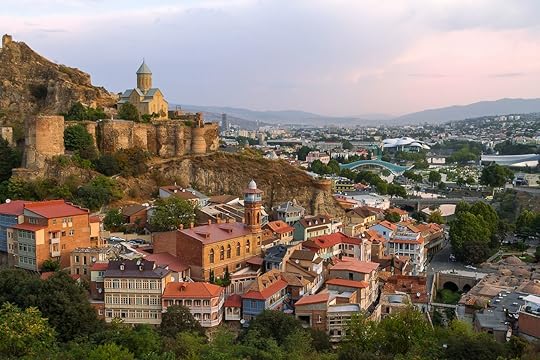
Photo: MehmetO/Shutterstock
This summer the Georgian government also announced it will be inviting travelers and workers who want to live in the country for over six months to apply for their new visa. Located at the crossroads between Asia and Europe, Georgia, like Estonia, is often underrated. Due to the mix of culture and tumultuous history, Georgia’s colorful capital Tbilisi is exciting, multicultural, and worth considering if you are looking for a change of lifestyle.
Although its visa program is still to be launched, the scheme will be focused on freelancers and remote workers and will offer a pretty stable option if you are looking for something long-term and affordable. You will need to cover all the bases: proof of travel insurance, a certificate of employment, and all the other standard information needed for a basic visa application. Applicants also have to wait in their home country during the application process, and upon arrival, the government will require you to quarantine at your own expense. As stated, applications are not yet open, but if you are keen to understand more about the process and government requirements, you can have a look over other visa options here.
6. Spain

Photo: kavalenkau/Shutterstock
One of the reasons many people choose to work remotely in Spain is because of its strong economic ecosystem, which is full of entrepreneurs and digital nomads. The expat culture is thriving in most parts of the country, so you won’t find it hard to make English-speaking connections.
The cost of living in Spain averages out around $1,185 per month for an individual living in a city. You won’t get anything fancy for that, but the quality of life in the country is high, fresh produce is cheap, and both the cities and rural countryside are appealing. Keep in mind WiFi might be an issue outside of major cities, so do a little reading before you set your heart on a farmhouse on a southern Spanish vineyard.
For a basic remote work visa valid up to one year in Spain, you need to have proof of employment and pass a background check. The application must be made in person and you have around a 90-day wait before you may get confirmation. You can not have a criminal background. You also have to have around $31,000, or more, in the bank. That’s going to make most digital nomads of our generation exempt from applying, but other than that and having private health insurance, there’s not a huge amount more to it.
7. Czech Republic

Photo: Veronika Galkina/Shutterstock
The Czech Republic has been offering US citizens a long-term business visa for quite some time. For years, people have been taking advantage of this opportunity that welcomes remote workers to live in an affordable location with superb links to major European cities. Its busy yet charming cities and sprawling countryside peppered with castles make this a perfect base if you are looking for a country with diversity in the heart of Europe.
In order to apply for the visa, you will need to contact your consular office in the US and remain in the US during the application process. You must be outside of the Czech Republic and on US soil when the visa is electronically added to your passport.
The process for applying is pretty standard, which includes making sure you have all the documentation notarized and attending an interview at the embassy. You also have to prove you have at least $5,600 for the year of your stay. Further information about the details of the visa and the application form can be found here.
8. Portugal

Photo: Pawel Kazmierczak/Shutterstock
With some of the coolest cities and small towns in Europe, a stunning coast, and a superb food scene, Portugal is worth considering for those who are willing to do a little homework and are looking for something more long term.
Portugal requires independent workers to demonstrate that they have skills needed within the country before applying for a temporary residence permit. This is a common requirement for many countries around the world and the list of what skills and professional training governments need often change. That said, staples such as those who work in health care, or have a degree in engineering can be found on most lists — though it would be more challenging to find a remote option in those fields.
In Portugal, you also have to register as a freelancer in the country, and if you offer a service, it helps your application if you have local clients. There are different visas depending on how long you would like to stay in the country, so overall this option requires you to do a bit of research, but the payoff of living on the Portuguese coast — especially if you have some language skills — would be worth the work.
9. Germany

Photo: saiko3p/Shutterstock
Germany is welcoming those who are self-employed, but it might not come as a huge surprise that in order to apply for this visa you have to have your ducks in a row and fill out a truckload of paperwork. The country’s freelance Freiberufler visa only lasts for three months, but you could potentially convert it over to a three-year residency permit if your freelance business is successful. From all the usual application forms to documentation, they ask for letters of recommendation from previous employers, a resume and cover letter, certificates of degrees, bank statements, and a written plan of what you intend to do when you’re in the country — which we doubt partying in Berlin will suffice.
10. Mexico
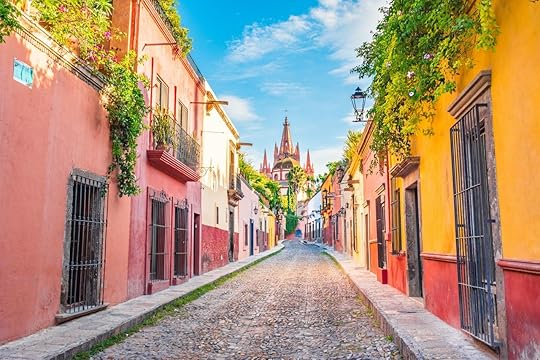
Photo: Rubi Rodriguez Martinez/Shutterstock
Mexico is clearly an attractive and somewhat obvious option for US citizens who are looking for a different pace of life and a change of scenery. The one year, temporary resident visa in Mexico is not a new scheme, and if you meet the criteria and stick to the guidelines, you can have an option to extend this visa for another three years. For this visa, you need what they call “economic solvency” to prove that you have an income of more than $1,620 per month, which is not hugely difficult, or an account balance of over $27,000, which is a harder ask for most. Under this visa, you can’t work for a business or individual within Mexico, meaning you’ll have to have a remote job stateside. 
More like thisNewsThis interactive map shows where you can travel in the US and what’s open
The post The 10 best digital nomad visas from around the world appeared first on Matador Network.

Thailand’s new visa allows tourists

Not only is Thailand reopening to foreign tourists, it’s also making it easier than ever to stay long-term. Starting as soon as October, the Special Tourist Visa (STV) program will allow tourists to apply for a visa in advance which, if approved, will allow them to travel the country at will after a 14-day quarantine period. The visa, which allows for a 90-day stay, can be renewed twice so that visitors can stay for a total of 270 days, i.e. nine months.
But getting the STV is a bit of a headache. To apply for the visa you must, among other requirements, hire the services of a third party, pay in advance for a private or chartered direct flight to Bangkok as well as for all your accommodations (including the state-approved accommodation where visitors will quarantine), provide proof of health insurance covering up to $100,000, and supply documents that include a criminal background check. Even after this is all completed and you’re off exploring Thailand, your movements may be monitored by an app or wristband.
When the program first begins next month, it will allow entry to a maximum of 1,200 tourists each month. That number will increase if the program proves successful. Each step of the difficult process is laid out in a flowchart provided by the Bangkok Post. 
More like thisExpat LifeThe 9 most difficult travel visas for Americans to obtain
The post Thailand will soon allow tourists to stay for nine months appeared first on Matador Network.

New York City’s climate clock

By now, humanity should know that the clock is ticking on climate change. Without a literal clock ticking away in our faces, however, we seem to conveniently forget. That’s why artists Gan Golan and Andrew Boyd installed a climate clock in Manhattan’s Union Square, 10 stories high for everyone to see.
On September 17, the clock began counting down from seven years, 103 days, 15 hours, 40 minutes, and seven seconds. When the clock runs out, the average global temperature will be 2.7 degrees Fahrenheit above industrial levels, if greenhouse gas emissions remain the same, and we face irreversible climate disaster.
The clock also displays a percentage in green, which shows the fraction of energy produced with renewable sources. The artists call this number the “lifeline.”
“We need to get our lifeline to 100% before our deadline reaches 0,” Golan and Boyd wrote on their website. According to Boyd, the clock is an effort to get people to wake up and take action today, and remind them that they can’t wait another seven years.
Despite its ominous appearance, Golan told the Washington Post, “This is not a doomsday clock; the number is not zero. It’s telling us there is still time, but we can’t waste it. The world is literally counting on us,” adding that “every hour, every minute, every second, counts.”
The clock will not, however, remain on display for the next seven years. It’ll only be there for a few more days, until September 27 and the end of New York City’s Climate Week. 
More like thisNewsThe world missed its 2020 biodiversity targets, UN report shows
The post A climate clock in NYC is counting down the hours until climate disaster appeared first on Matador Network.

Whales stranded in Australia
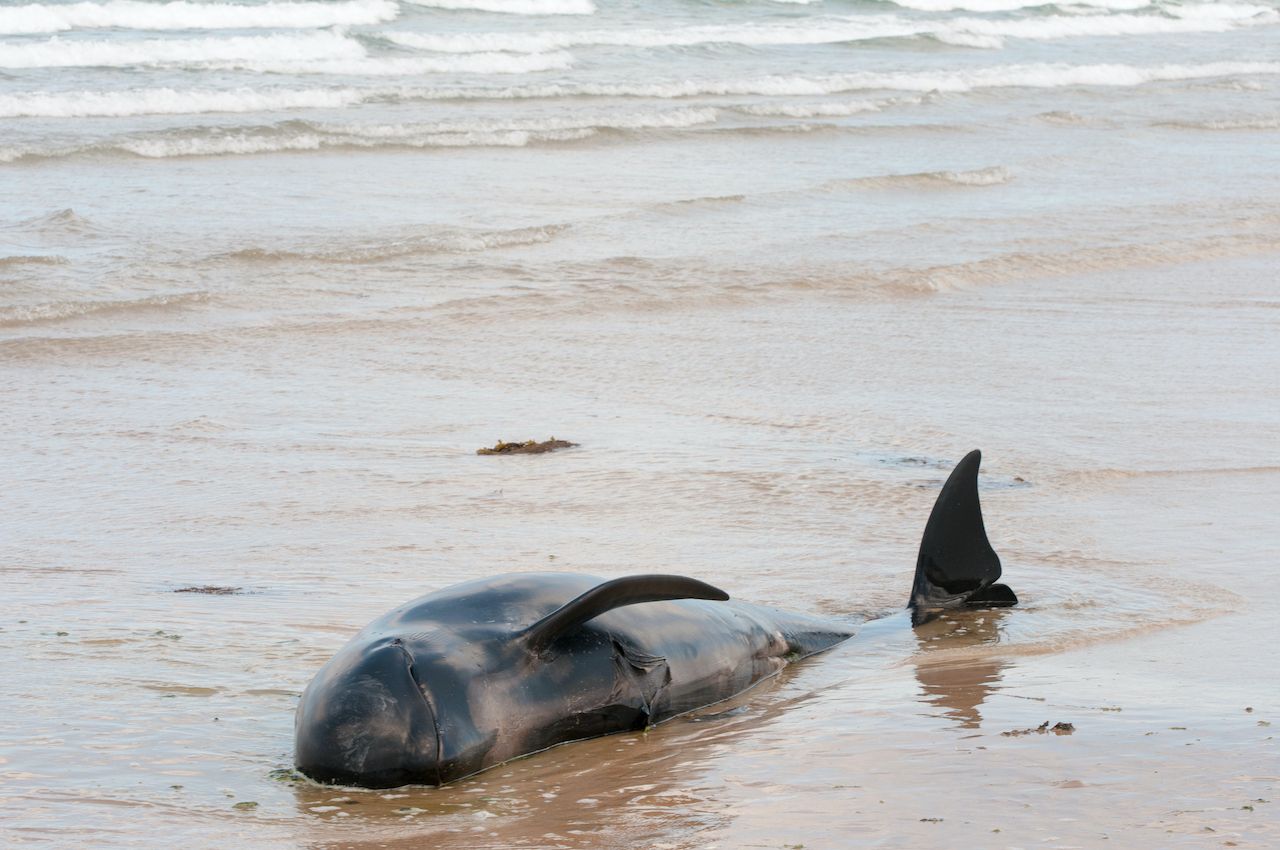
Of the estimated 470 pilot whales stranded in western Tasmania, Australia, 400 have died despite intense rescue efforts. According to a recent report from the BBC, 50 have been successfully rescued and roughly 30 are still in the process of being saved.
About 200 troubled whales were spotted on Monday, and rescue efforts started as soon as possible, saving 25 animals, but 270 more whales were spotted the next day, intensifying the situation and making the work of the 60 rescue workers much more difficult.
To rescue the animals, the workers use slings to carry the whale off the sand into deep waters. Each pilot whale can measure up to 25 feet and weigh three tons.
If the animals stay too long in shallow waters or on the beach, they exhaust themselves, panic, and drown.
It remains unknown why the pilot whales got stranded; they could have become disoriented by sonar or underwater earthquakes, followed a sick leader, or attempted to hunt in shallow water, explained Dr. Mike Double, leader of the Australian Marine Mammal Centre, to The New York Times.
Tasmania is an infamous spot for whale stranding, but this tragic event is the largest in Australia’s history. 
More like thisWildlifeWhere to swim with the world’s most amazing marine wildlife
The post Almost 400 whales have died in Tasmania after largest stranding in Australia’s history appeared first on Matador Network.

September 22, 2020
Hawaii is the happiest state in 2020
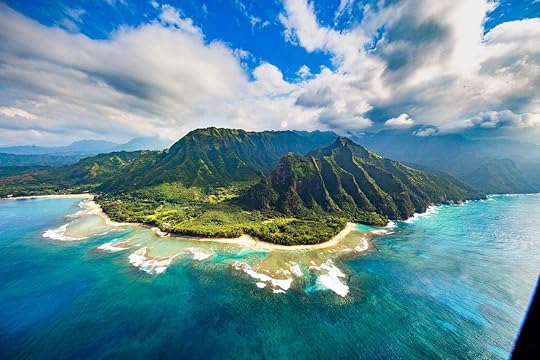
There’s not much to be happy about in 2020, so measuring happiness might be considered a futile exercise. Talking about the happiest state in the US right now is like talking about the least crusty noodle at the bottom of an old cooking pot, but nonetheless, WalletHub has conducted a study of the 50 states aimed at measuring their happiness. They based their findings on three categories: emotional and physical wellbeing, work environment, and community environment. The data produced an answer that many of us may find obvious: Hawaii is the happiest state in the country.
WalletHub’s Adam McCann wrote in a statement, “In 2020, the COVID-19 pandemic has disrupted life as we know it, causing sickness, limiting social interactions, and leading to widespread job losses. During these trials, which have had a strong negative impact on Americans’ mental health, WalletHub searched for the states where people can stay positive despite the circumstances.”
Hawaii ranked number one and was followed by Utah, Minnesota, New Jersey, Maryland, California, North Dakota, Iowa, Idaho, and Connecticut. If you’re trying to find a trend there, don’t squint too closely.
Hawaii may have come in first overall, but it ranked second in emotional and physical wellbeing (after New Jersey) and third in community and environment (after Utah and Idaho). Utah and Idaho also came in first for the work and environment category. Minnesota ranked first in the subcategory of “highest adequate sleep” and New Jersey had the lowest average amount of adult depression. Maine, meanwhile, ranked as the safest state in the country.
Dr. Chieh-Chen Bowen of Cleveland State University’s psychology department said, “Happiness is a feeling of joy, contentment, and overall positive emotions. Happiness is a universal goal. We all want to be happy and want such feelings to last.” 
More like thisWhere to Stay9 stunning yet affordable Airbnbs on Kauai, Hawaii
The post Hawaii was just named the happiest state in the US in 2020 appeared first on Matador Network.

Chicago arcade bar haunted house

Partying this Halloween is pretty much canceled this year — but not from the confines of our cars. Replay Lincoln Park, an arcade bar in Chicago, is transforming its back alley into a drive-thru haunted house, complete with zombies, demons, and the undead.
Guests at the Alley of Darkness will be able to enjoy a short drive-in movie to set the stage for the haunted experience before being asked to put the car in park for 30 minutes. During this time, you will be terrorized by a costumed cast of characters. The haunted drive-thru will include fake blood, chilling sound effects, and realistic props that will make you think you’re about to be the first person killed during a cheesy horror movie. And you can’t leave your car at any time during the experience, so fight the urge to bolt for safety.
The experience is located at 2833 N Sheffield Avenue and will run from October 2 through October 31. Tickets cost $75 per car, and you can even rent your own car from the venue for an additional $25 charge. To partake you must make a reservation, and reservations are available every 20 minutes between 5:00 and 10:40 PM. 
More like thisHolidays7 fascinating Halloween traditions around the world
The post An arcade bar in Chicago is turning into a drive-thru haunted house appeared first on Matador Network.

Underwater sculpture parks in France

In-person museums are opening up again, but there’s one type of museum that makes social distancing particularly easy: underwater. Three aquatic sculpture projects are set to be submerged off the coast of France this fall.
On September 19, Corsican collector Francois Ollandini added three sculptures by Marc Petit to the seven already submerged at the foot of the Isolella Tower near Ajaccio. A sculpture of the goddess Gaia also sits in the water in front of Lazaret Ollandini, the collector’s home and private museum dedicated to Petit’s work.
Ollandini has also commissioned 18 other sculptures from Petit, to be submerged in a location not yet determined. He hopes to install them in a fishing- and sailing-free zone on the coast north of Ajaccio.
Petit will also contribute a sculpture to Marseille’s Musée Subaquatique, a snorkeling attraction slated to open on September 24. It will include 10 pieces by different artists installed 16 feet under the waters of the city center beach Les Catalans.
British sculptor Jason deCaires Taylor, who has already partaken in sculpture parks in Mexico, Lanzarote, Indonesia, and more is also getting in on the fun. He is preparing six works for a November submarine display 13 feet below the surface of water to the south of the island of Sainte Marguerite in the Bay of Cannes. 
More like thisDivingThe most exciting places to scuba in 2020
The post France is opening three underwater sculpture parks this fall appeared first on Matador Network.

Best secret beaches in Kauai, Hawaii
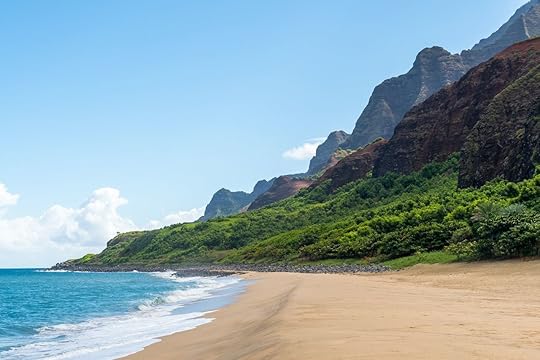
You can circumnavigate the island of Kaui in just over two hours — well, the parts that have a road, that is. About a fifth of the shoreline isn’t reachable by car at all. But the point is, the island isn’t that big a place. Yet it still has a surprising stash of beaches that most visitors will never see. Getting to them involves varying degrees of difficulty — either for your car or for yourself — but the reward is worth the trek.
1. Hideaways Beach — Princeville

Photo: FReny/Shutterstock
You’d think that a beach with such a provocative name would be a poorly kept secret. But what keeps the crowds away is that this beach is hard to find and even harder to reach. Deep in the manicured Princeville area, just by the St. Regis is a tiny parking lot with so few spots you may have to wait for one. After parking, you scale a cliffside in the form of broken steps, rusted guardrails, and dirt, death-gripping oddly placed slack ropes as you go.
When you get to this tucked sliver of sand canopied by lush greenery, the cliffs rising up behind it, you’ll know that waiting to park and descending a cliff in your flip flops was worth it. Bring snorkel gear, rented in Hanalei, as this is one of the best snorkeling spots in Kauai. While you’re out in the water, you can even swim over to Pali Ke Kua Beach, an even less accessible, and equally Edenic, cove.
2. Secret Beach — North Shore
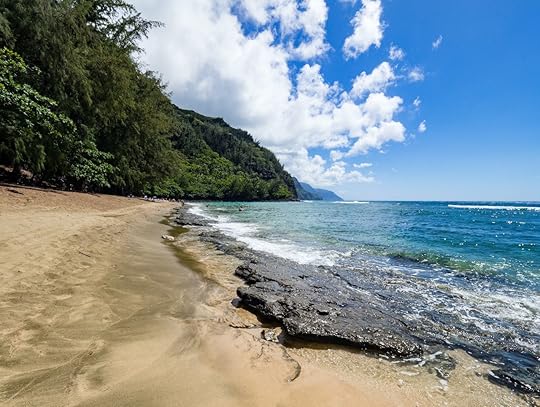
Photo: Ventu Photo/Shutterstock
With a name like Secret Beach, or simply Secrets, the piece of shoreline known in Hawaiian as Kauapea Beach is sure to attract interest. But good luck finding the long path through the greenery down to the beach, as there’s no signage. Once you do get to the sand, you’ll find very few people. Don’t be surprised, though, if further down the beach you spot a few sunbathers who won’t be worrying about tan lines — as a part of this beach is for those who feel even bikinis and speedos provide too much coverage. While swimming at Secrets is not recommended most of the time given the rough current, there are tidal pools at the far end of the beach that are perfect for a cooling-off dip.
3. Gillin’s Beach — Poipu
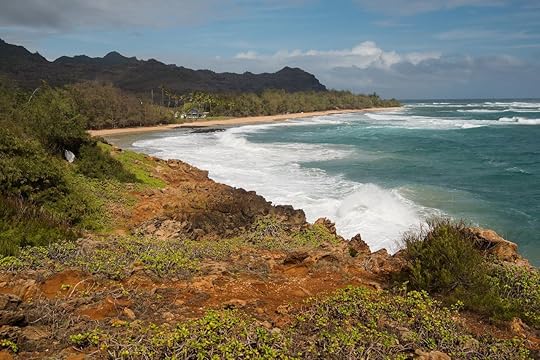
Photo: Ralf Broskvar/Shutterstock
Drive due east from Poipu, on the southern tip of the island, and keep going past the Grand Hyatt Kauai Resort. The paved road will give way to a dirt road, but you should keep going, even as the potholes seem to grow ever larger. The one time you should consider turning back is after a heavy rain when some potholes turn into miniature lakes. Go left at the Y intersection and right at the later T intersection. The whole distance is 2.5 miles and may well be prohibited by your car rental contract since the road is unpaved. It’s your call, but the beach is a beauty. Just sayin’.
When you do get to the parking lot, park and walk through the pines to a long, narrow beach framed by pines. This is not the place to go for a long swim, as it’s rocky. But the pines provide plenty of shade, so you can while away the hours. And it is possible to take a dip at the water’s edge. Gillin’s is close to the resorts and condos of the South Shore but feels a world away.
4. Lawai Bay — Poipu

Photo: Jordan Tan/Shutterstock
To access the beach at Lawai Bay, drive past Spouting Horn towards Allerton Garden. You’ll need to stop outside a gate that’s usually closed, and walk on a stone wall around it. Then you’ll trek through an overgrown path along a cliff, cursing the fact that you brought so much stuff. Just when you think you’re lost, you’ll see a stunning crescent-shaped beach. Get settled and enjoy the scenery.
You’ll see local kids on boogie boards, literally spinning upside down inside what surfers call a “terminal barrel.” Best not to include a boogie board of your own in the collection of stuff you drag to the beach, though. This is a shore-break wave that can do some damage to anyone but an expert boogie boarder.
5. Paliku or Donkey Beach — Kapa’a
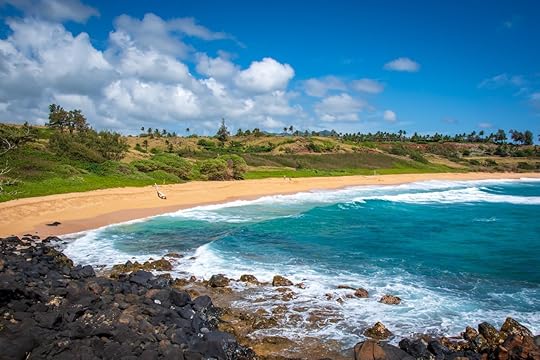
Photo: Everett Atlas/Shutterstock
Paliku Beach is known to some as Donkey Beach — supposedly so-named for the mules that hauled sugar cane from the fields out to the water. The waters here are pretty rough, so it’s not a place to go and hang out all day with the kids. But it is secluded and usually very empty. Although the parking lot is right off the highway, the walk to the beach is at least 10 minutes long. A more fun option is to arrive via the Kauai Multiuse Path, which is a lovely paved biking and walking path that runs up the island’s east side. Rent beach cruisers at Hele On Kauai for $15/day and ride the three miles up to this beach. Bikes come with baskets or bags, but if you’ve opted to rent a cooler attached to the back of the bike, you could plan to picnic by this secluded spot.
6. Kalalau Beach — Na Pali Coast

Photo: Julie Shipman/Shutterstock
There are plenty of other tucked-away beaches in Kauai that are not quite as hard to get to as this one, which we didn’t list here because the effort-reward quotient isn’t quite right. Kalalau Beach, though, is really worth the 11-mile hike to get there. Not just because the beach itself is a slice of paradise, complete with a cascading waterfall as a backdrop, but because the path to get there is one of the most stunning hikes in the country. The famed Kalalau Trail along the Na Pali cliffs is open again following serious storm damage a while back, but be sure to check opening schedules before you go, as it can close due to rain or hurricane forecasts. Also note that if a boat operator offers to drop you off at Kalalau Beach, turn them down. It’s illegal and shouldn’t be encouraged — no matter how tempting. 
More like thisBeaches + IslandsWhy Kauai is the most underrated island in Hawaii
The post The most amazing beaches in Kauai you’ve never heard of appeared first on Matador Network.

Southwest Airlines’ Companion Pass

Air travel has declined due to COVID-19, but Southwest Airlines is giving people an enticing incentive to take to the skies again: its Companion Pass.
The pass isn’t a new concept. Historically, the Companion Pass allowed frequent travelers to choose a companion to accompany them for free on any Southwest flight for two months, and it was earned by flying on 100 Southwest flights or earning 125,000 points in a calendar year. Now, Southwest is making the Companion Pass much more accessible as part of its “Wanna Get Away” campaign for fall and winter travel.
This week, Southwest announced that travelers can be eligible for the Companion Pass after booking just one flight. To qualify, you just have to purchase a flight (one-way or round-trip) between September 22 and 24, 2020, and travel before November 15, 2020.
Once you’ve fulfilled these requirements, a friend can fly with you for just the cost of taxes and fees between January 6 and February 28, 2021.
Charter flights, group travel, and Southwest Vacation packages don’t qualify for the promotion, so keep that mind before booking. You must also be a Rapid Rewards member — a program that allows for increased flexibility when traveling with Southwest. Rapid Rewards members qualify for unlimited reward seats, no blackout dates, and points that don’t expire. 
More like thisNewsPoll reveals the most scenic takeoffs and landings in the world
The post Southwest Airlines’ new Companion Pass will let your guest fly for free appeared first on Matador Network.

Matador Network's Blog
- Matador Network's profile
- 6 followers



